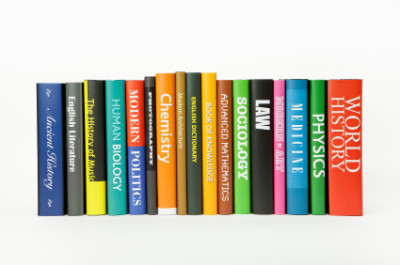Why are Textbooks so Expensive?
The high prices of textbooks can feel painful, especially if you’ve been trying to save money in college. And, you’re not just imagining it: the average college student at a four year public college spends roughly $1,200 per year on textbooks alone, according to The College Board. And if it seems like the cost of textbooks keeps going up, you’re right. Since 1978, the cost of textbooks has risen 812%.
So why are textbooks so expensive? Is there any way to avoid these high costs?
Why are textbooks so expensive?
College bookstores today make purchasing course textbooks very convenient. In many cases, a student can simply walk into their college bookstore, and locate a shelf designated for their course by subject, course number, and professor name, then check out at the counter in a manner of minutes.
“That will be $232.68,” the clerk says. That seems expensive, you may think to yourself, but you pay it anyway because your first class is the following day.
So what made that one textbook so expensive? A former employee of a large textbook company, Zachary Crockett, broke down the cost in his article on the economics of the textbook industry. Here’s a brief summary of his analysis.
- Bookstore markup (28%) – The college bookstore likely purchased this from the publisher at wholesale price ($181.50) but marked up the price to $232.68 (28%) in order to cover costs associated with running the brick and mortar store (employee wages, utilities, taxes, etc.).
- Marginal production costs (5%) – This is the cost associated with producing the physical textbook (paper, binding, ink, printing fees, etc.).
- Author royalty (15%) – This is the percentage of the book’s sale that goes to the author of the textbook, as contracted and agreed upon between the publishing company and the author.
- Editorial costs (32%) – This percentage is a little difficult to estimate, according to Crockett, due to the difficulty in estimating how many labor hours went into the actual editing of that particular book, but he claims that 32% is a reasonable estimate based on his own experience with time sheets at a book publishing company.
- Marketing costs (15%) – This is the amount of a publisher’s budget that is typically allocated to marketing efforts, which includes book fairs, paying field sales representatives, providing free copies to authors and professors, and any other promotional efforts (conferences, advertising, etc.).
- Freight (1%) – This is the cost of shipping the physical book from the publisher to the bookstore.
- General company overhead (10%) – This cost includes the publishing company’s property fees, utilities, licensed software, and general office expenses.
- Profit (22%) – This is the remaining amount from the cost of the textbook that goes to the publisher.
Ways to cut back on textbook expenses
Now that you know why purchasing a new textbook edition from your local college bookstore costs as much as it does, let’s take a look at some ways in which you can save (or help your students save) on textbook expenses.
- Plan further in advance: In order to have the most options to save money on textbooks, it’s important that you plan far enough in advance so that walking into your college bookstore last minute is not the only option.
- Rent or purchase a used copy of your college textbook: There are many great websites, such as Amazon.com, and Half.com, which sell used copies and have textbooks for rent. Going with one of these alternatives can save you a significant amount of money throughout the year. On a similar note, when you’re done with your textbooks (if you purchased a used copy), you can sell them back to these same textbook sites for some extra cash at the end of the term!
- Purchase an older edition of your required textbook: Publishing companies release new editions of textbooks frequently, and the changes to the new edition are often minimal. You can save money by purchasing a used copy of an older version of your textbook, but to be safe it’s a good idea to e-mail your professor to make sure an older version would be a suitable substitute.
- Purchase or rent the digital textbook (a.k.a. ebook) version instead: Amazon.com and Yuzu.com are two popular sites that offer eTextbooks for a price typically slightly less than the printed version. Though portability is nice, eTextbooks can still be quite expensive in comparison to other alternatives listed above. Renting your eTextbook may be an option available through these sites, however, which could save you even more money.
- Professors, be mindful: If you are a professor, please try to be mindful and knowledgeable of textbook costs. You can really help students by releasing your required textbook list early so that they can either purchase used copies or find an available copy for rent. Also, making it clear on your textbook list that older editions are acceptable in your course can really help students in finding less expensive textbook options. To help students save the most money, try to provide electronic versions of articles or resources so that students do not have to purchase as many textbooks.
Hopefully this article has provided you useful insight into why college textbooks are so expensive, and ideas for creative ways to cut back on your total college education expenses. For other ideas on ways to make smart financial decisions in college, be sure to check out our articles “How to be Financially Responsible in College” and “3 Financial Tips for Future College Students.”




